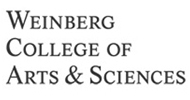Team:Northwestern/Results/Characterization
From 2011.igem.org
PROJECT

RESULTS

CONSIDERATIONS

ABOUT US

NOTEBOOK

ATTRIBUTIONS


 |
We characterized over two dozen parts over the course of this project. However, among the many, we will present the parts which represent our project best. These parts are, [lasP+RBS30+GFP, CP+RBS30+lasR], [rhlP+RBS30+GFP, CP+RBS30+rhlR], [GR(S)+RBS34+GFP, CP+RBS34+RhlR].
The construct [lasP+RBS30+GFP, CP+RBS30+lasR] is suited perfectly for a conducting a binary test to determine the presence of P. Aeruginosa. Figure 1 below details the fluorescence per OD observed upon the induction of the system with multiple autoinducer concentrations. It is important to mention that there were 4 replicates of each autoinducer concentration sample, and the mean fluorescence per OD was plotted with the relevant error. In every case, the construct follows the same general trend except the negative control (0μM).
 |
There is significant amount of overlapping of error bars in the above Figure 1. In order to statistically confirm the variance of each concentration curve t-tests were conducted as detailed below in Table 1. The null hypothesis is that there is no statistical difference between the means of the compared samples. On the other hand, the green cells indicate rejection of the null hypothesis that there is significant difference between the means of the compared samples. Blue cells indicate failure to reject Table 1 has three sections; the top, center and bottom.
 |
The table on top compares the data from each of the initial segments of the curves with the other initial segments (the region before any fluorescence is observed ~30min). As the table indicates, most samples have no statistical difference than their counter parts, except of course for the 100μM which is induced quite quickly. Therefore we can conclude that the samples generally exhibit similar basal fluorescence.
The table in the middle compares the data from the initial segment of the curves (before any fluorescence is observed) with the final steady state fluorescence (last 10 data points). A glance at the table confirms that fluorescence per OD changes in each of the samples as time progresses. However, that seems to be the case with the negative control as well. Figure 1 demonstrates that the fluorescence per OD of the cell doesn’t increase, but decrease. This oddity is actually the result of a steady of fluorescence and a high rate of cell growth which led to a sharp decrease in fluorescence per OD was shown in Figure 2 below.
 |
The table on the bottom compares the data from each of the final steady state segments of the curves with the other final steady state segments (last 10 data points). In this case, all the samples show no similar distributions of fluorescence except the 0.1μM, 0.5μM, and of course 0μM autoinducer concentrations. At first this may seem alarming, but it actually is not. In a binary test, simple detection is all that matters, whereas concentration sensitivity does not. When analyzing the steady state fluorescence and autoinducer concentration, one can observe that the fluorescence per OD is maintained fairly constant from within a 10% of the mean fluorescence per OD, illustrated by figure 3.
 |
In contrast to the binary detection system, the construct [rhlP+RBS30+GFP, CP+RBS34+rhlR] is well suited for a conducting for determining the concentration of P. Aeruginosa by detecting and discriminating between various different concentrations of autoinducers. Figure 4 below details the fluorescence per OD observed upon the induction of the system with multiple autoinducer concentrations. Once again, there were 4 replicates of each autoinducer concentration sample, and the mean fluorescence per OD was plotted with the relevant error. Unlike the binary detection system, the fluorescence per OD of each of the curves is distinguishable from the other concentrations.
 |
For the most part, overlapping of error bars only occurs when the concentration of the autoinducer increases beyond 15μM which is not physiologically relevant. The resolution of the system can be demonstrated by figure 5, which clearly demonstrates that autoinducer concentrations between 0μM and 5μM are clear and distinguishable.
 |
However, in order to statistically confirm the variance of each concentration curve, t-tests were conducted as detailed below in Table 2. The null hypothesis is that there is no statistical difference between the means of the compared samples. On the other hand, the green cells indicate rejection of the null hypothesis that there is significant difference between the means of the compared samples. Blue cells indicate failure to reject Table 2 has three sections; the top, center and bottom.
 |
The table on top compares the data from each of the initial segments of the curves with the other initial segments (the region before any fluorescence is observed ~30min). As one can observe, the samples predominantly are not statistically different than their counter parts, with except of course for the 100μM which is induced quite quickly, relative to the 0μM-5μM autoinducer samples. Hence it can be concluded that the samples exhibit similar basal fluorescence.
The table in the middle compares the data from the initial segment of the curves (before any fluorescence is observed) with the final steady state fluorescence (last 10 data points). Similar to the observation made in the binary system, each construct changes a statistically significant amount when exposed to the autoinducer. Unfortunately, so does the 0μM autoinducer sample. However, in this case, the induced constructs produce orders of magnitude more fluorescence than the negative control, so any cell bias introduced by either an OD irregularity is insignificant and can be ignored.
The table on the bottom compares the data from each of the final steady state segments of the curves with the other final steady state segments (last 10 data points). As can be observed, almost every single steady state fluorescence curve is different than the other. The two exceptions are the 7.5μM-10μM, and the 15μM-20μM autoinducer concentration samples. It is important to note that 10μM-15μM and 20μM-50μM concentration samples to indeed have statistically significant differences. In fact, the high degree of discrimination between relative autoinducer concentrations strongly qualifies this construct to be a concentration sensor. The steady state fluorescence per OD is conveyed in figure 6. The logarithmic regression fits the data quite well, and proves that the construct can potentially be used in as a sensor.
 |
A brief overview of our analysis shows that our GFP constructs were extremely successful. Both the Las and Rhl promoters had statistically significant differences from the controls at most or all of the autoinducer concentrations we tested. The Rhl promoters produced more fluorescence overall, but also had a higher concentration dependence. The Las promoters produced very similar fluorescence values at almost every autoinducer concentration. These results provide an excellent characterization of the original registry promoters they are based on, as well as the constructs themselves. They also provide a solid basis for a device that can detect the presence of Pseudomonas Aeruginosa.
Our RFP constructs were not as successful. The results were inconsistent and the signals did not seem to be correlated to the presence of the autoinducers. One possible explanation is that we used an incompatible form of RFP, but we are unsure of that and have put the parts in the registry for future investigation.
In addition to working with the Las and Rhl dependent promoters already on the registry, we also characterized some new ones extracted directly from the Pseudomonas genome. This resulted in another potential set of promoters for use in a Pseudomonas detection device. In particular, the Rhl dependent promoter we extracted showed excellent sensitivity to PAI2.
For complete characterization information on all of our parts, please refer to our Biobricks page. Clicking on a part will take you to the Registry of Standard Biological Parts, where the complete analysis for that part is posted.
Refer here for our testing protocol.
 "
"




